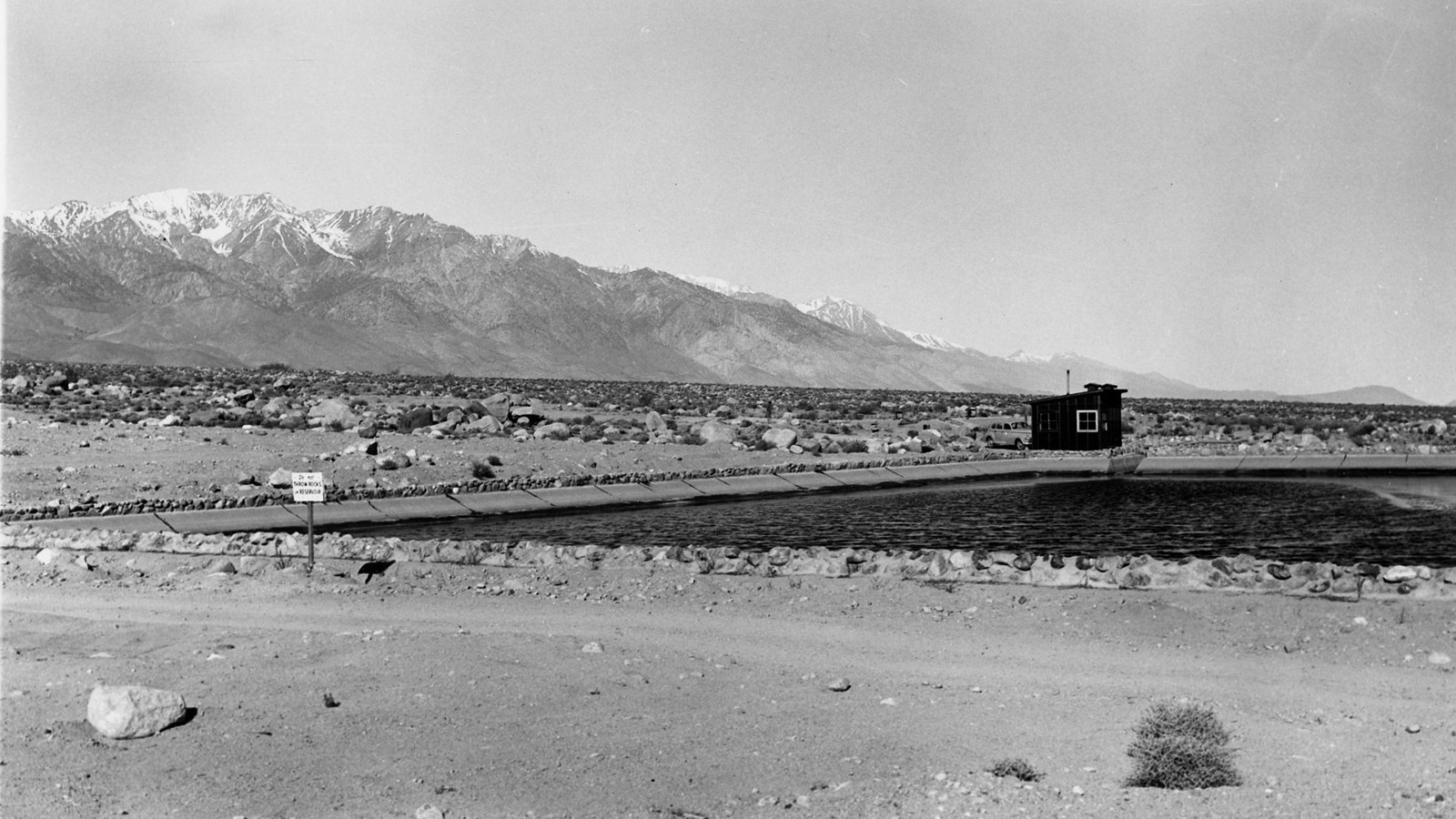Last updated: October 7, 2021
Place
Manzanar Reservoir

Courtesy of Toyo Miyatake Studio
Historical/Interpretive Information/Exhibits
In spring 1942, the US Government transformed this landscape from an abandoned town to a “city” where it would forcibly confine more than 11,000 Japanese Americans. The abundance and quality of water was critical.Decades earlier, the Owens Valley Improvement Company built a creek-fed water system, including a small reservoir, for the farming town of Manzanar (Spanish for “apple orchard”).
In May 1942, army contractor Vinson and Pringle began construction on this reservoir, also fed by Shepherd Creek. Reservoir infrastructure included a settling basin, sand trap, chlorine house, and storage shed. In 1943, Japanese American crews enlarged the 540,000-gallon reservoir to a 900,000-gallon capacity.The reservoir provided a daily supply of up to 1,500,000 gallons of water through 40,000 feet of pipes to faucets outside Manzanar’s barracks and into mess halls, latrines, and laundry rooms. The system also supplied 84 fire hydrants, Victory Gardens, and dozens of Japanese gardens.The camp closed in 1945. For decades after the war, Owens Valley locals came here to swim. Although no longer in use for water storage, the reservoir is an important part of Manzanar’s history.
Inscriptions
The inscriptions in the reservoir’s concrete illustrate a sampling of attitudes among Japanese Americans. Embedded pebbles in the wall around the reservoir spell out: “STONE WALL BY THE EMERGENCY CREW 2/25/43.” The Emergency Crew performed vital work, but it was hard labor and thought to be one of the worst jobs in camp. The camp administration considered some of the crew members uncooperative. Some inscriptions reflect feelings of alienation: pro-Japanese and anti-American sentiments occur alongside names, initials, and dates. But artistic touches – rustic stone lanterns and decorative upright rocks – suggest that the reservoir crews took pride in their work. One inscription, the Japanese character for “peace,” echoed the hopes of thousands of people confined at Manzanar.
